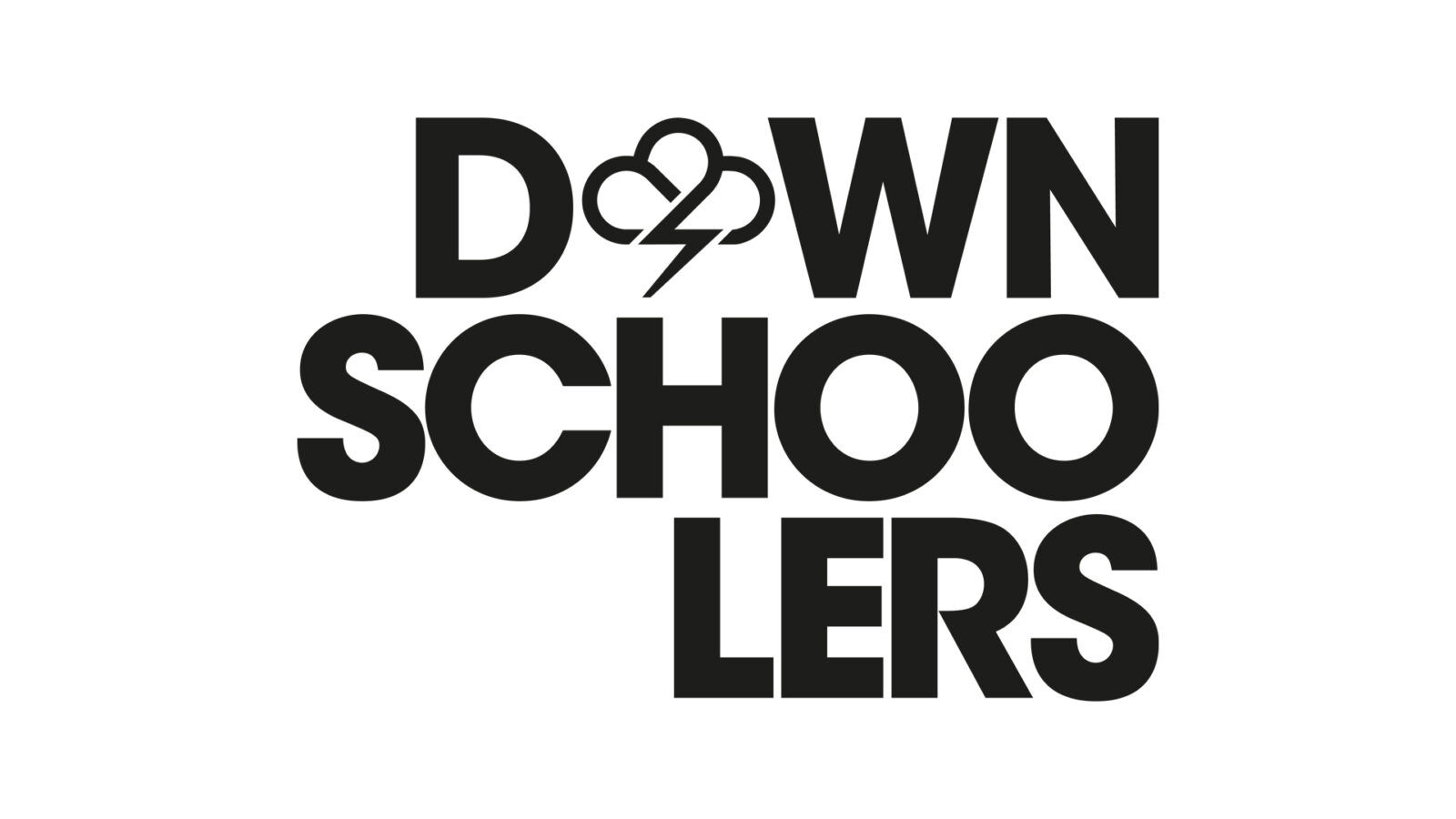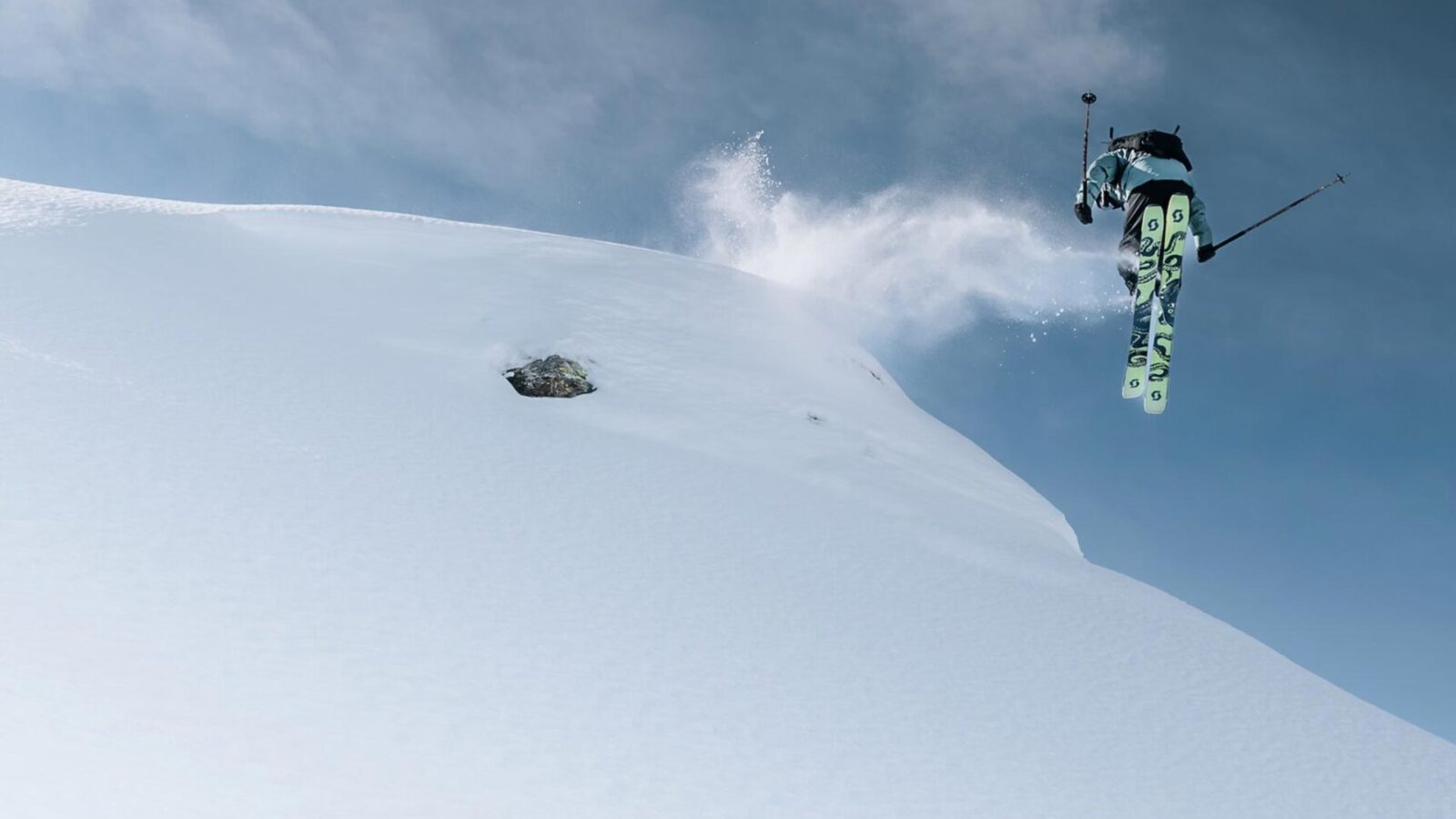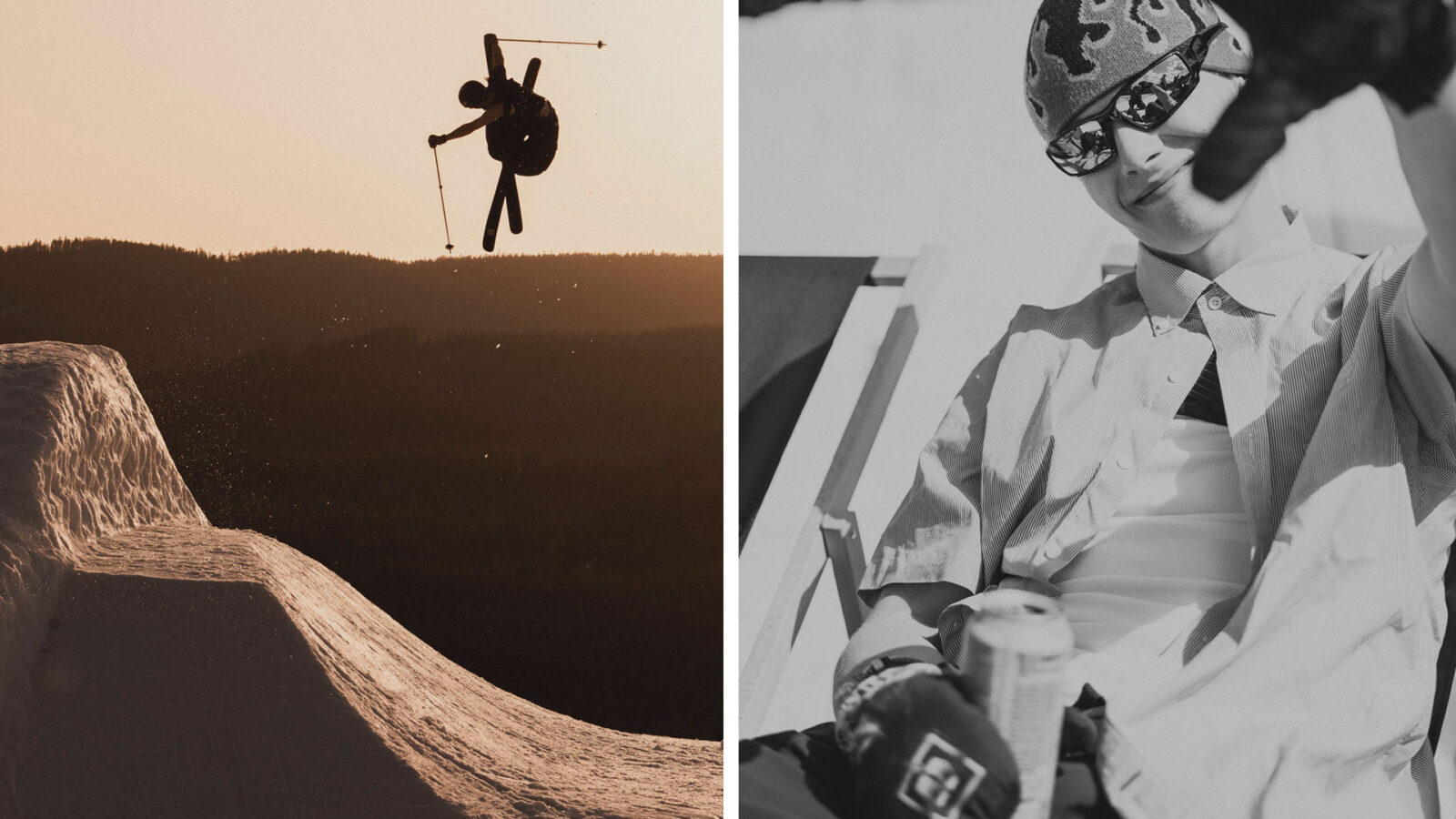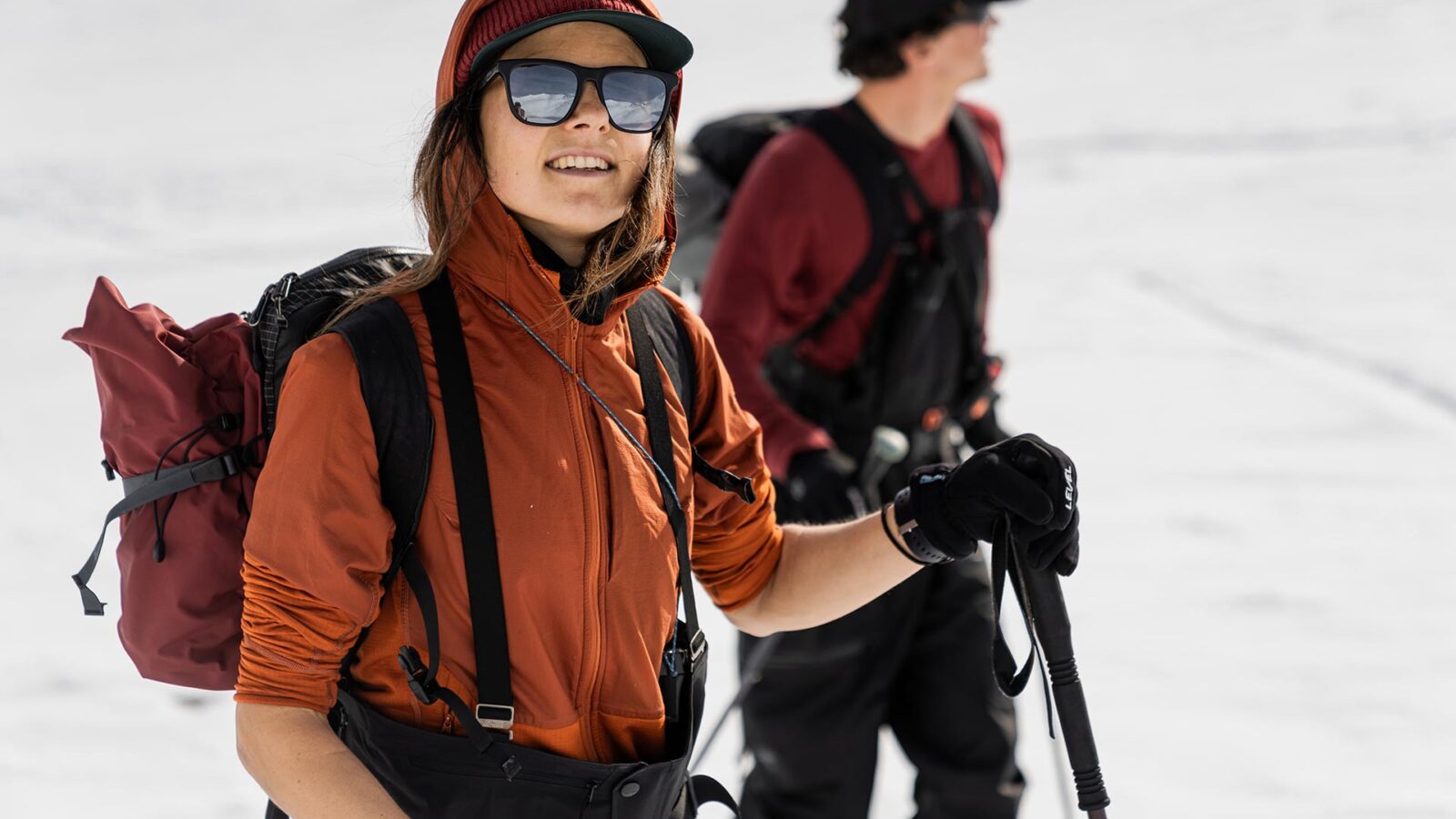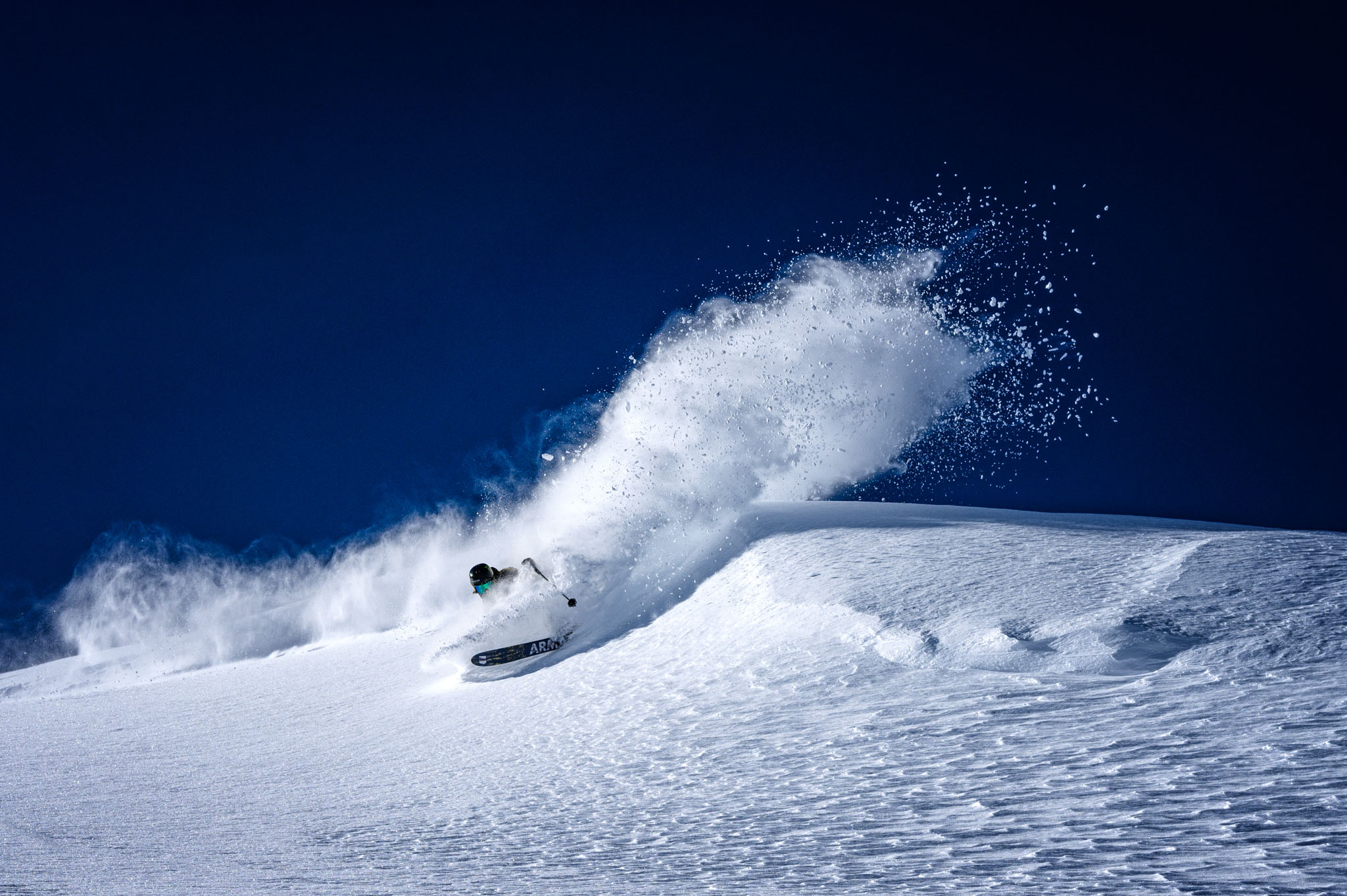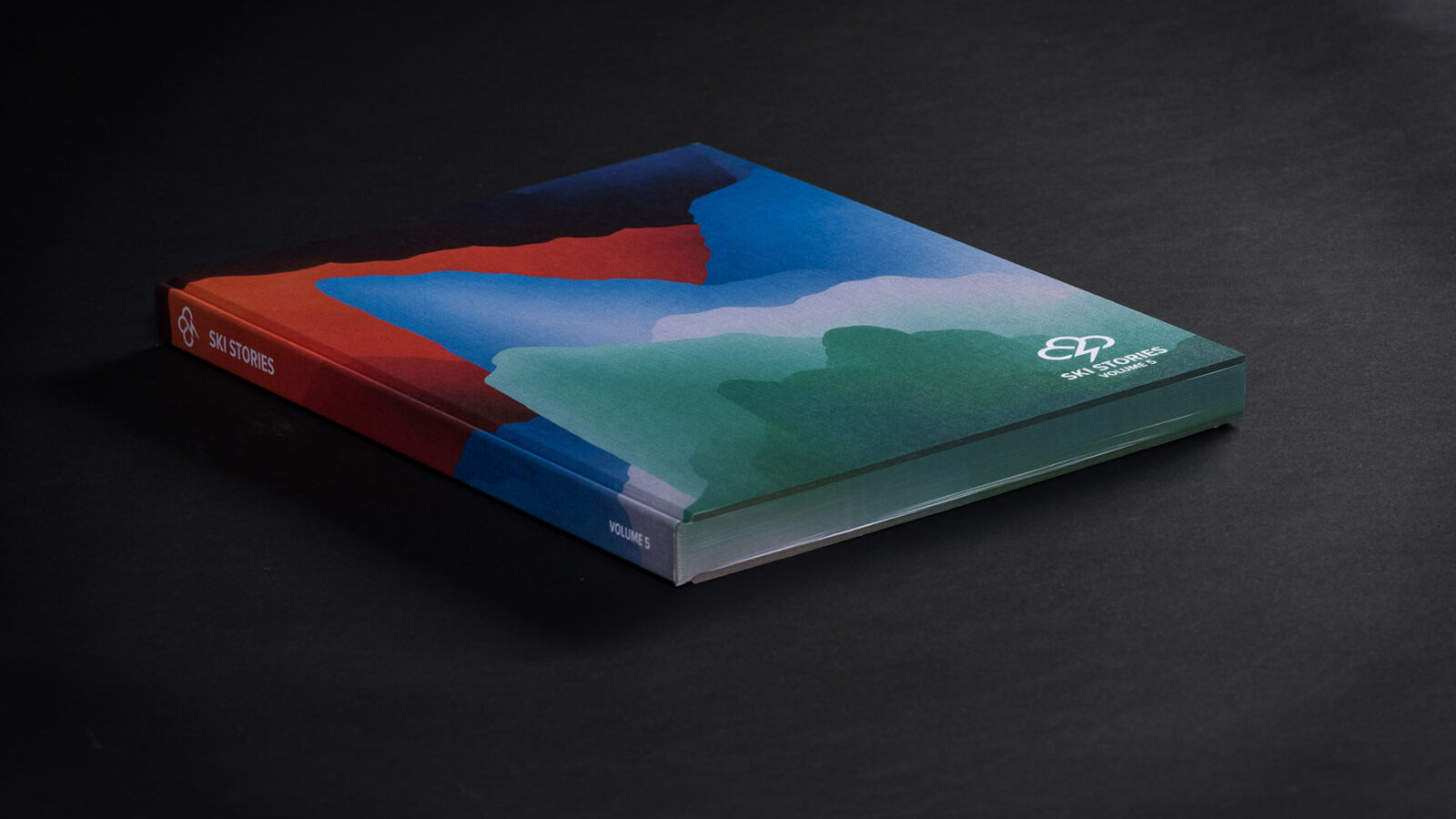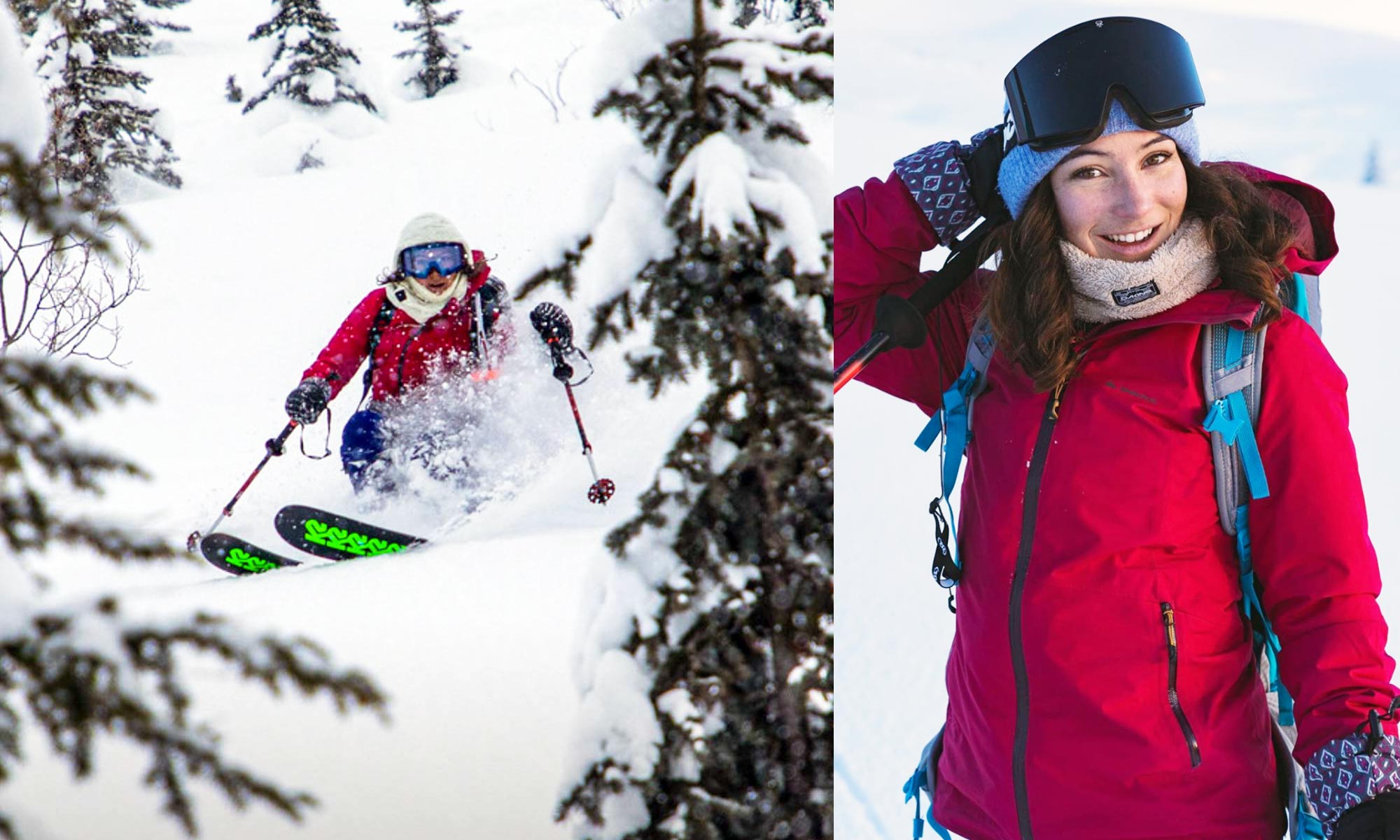
Stories
On Record: Anaïs Caradeux
I first met Anaïs Caradeux last summer. We shared a sunset in front of a glassy line-up at a local surf spot in France. She was looking for a place for to sleep in her car for the night; a cute smiling face and black salty hair blowing in the evening breeze. You know that feeling of just hanging out for hours, enjoying the moment and talking with someone you’ve just met? Anaïs is a perfect partner for this situation: she’s authentic, humble, kind and super funny.
She's been on the ski scene for a few years now, since 2006 precisely. But after her retirement from competition in 2019, Anaïs had to re-invent herself. After three months of surfing, she came back on what she knew the most: the mountains, this time in search of raw backcountry instead of icy pipe walls.
Interview: Charlotte Bartczak
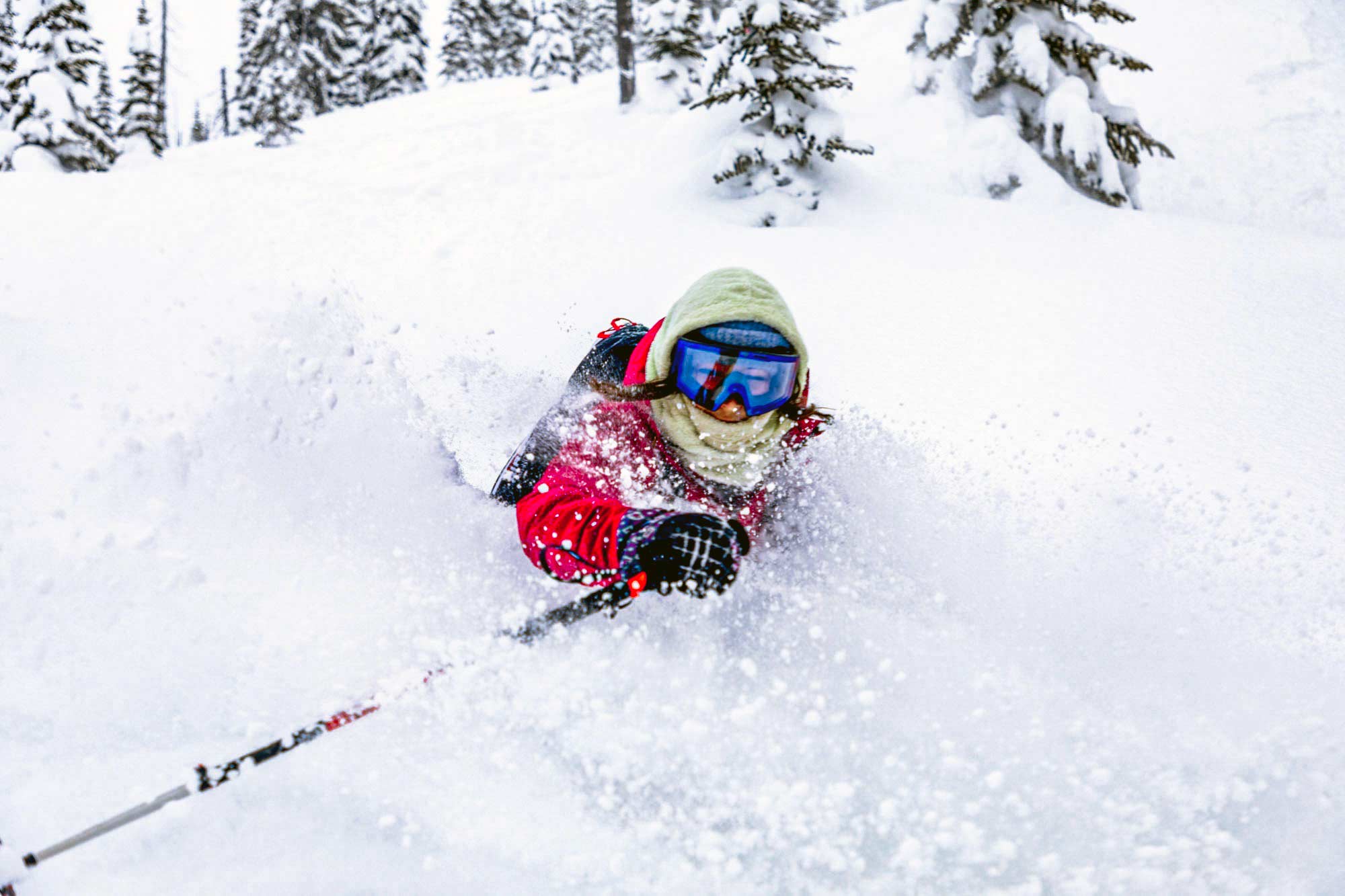
Yeah, this seems better than halfpipe skiing. Photo: @destination_poudreuse
Anaïs Caradeux
IG: @anaiscaradeux
AGE: 29
DISCIPLINES: First halfpipe, now backcountry
LIKES: Breakfast, having a good time with the homies
HATES: Injustice, bad-faith people
HOBBIES: surfing and traveling
SPIRIT ANIMAL: Wolf
CREATE A TRICK: The baguette roll. Two years ago I tried to do a flair, but I rolled my shoulder and landed switch… this is how I created a trick that I will never do again. So scary!
FUNNY STORY: After the 2013 X Games Anaïs had the craziest 72 hours of her life: she ended a party in the drunk tank, lost her passport and had to fly from the USA to Costa Rica on the same day because her visa was expiring.
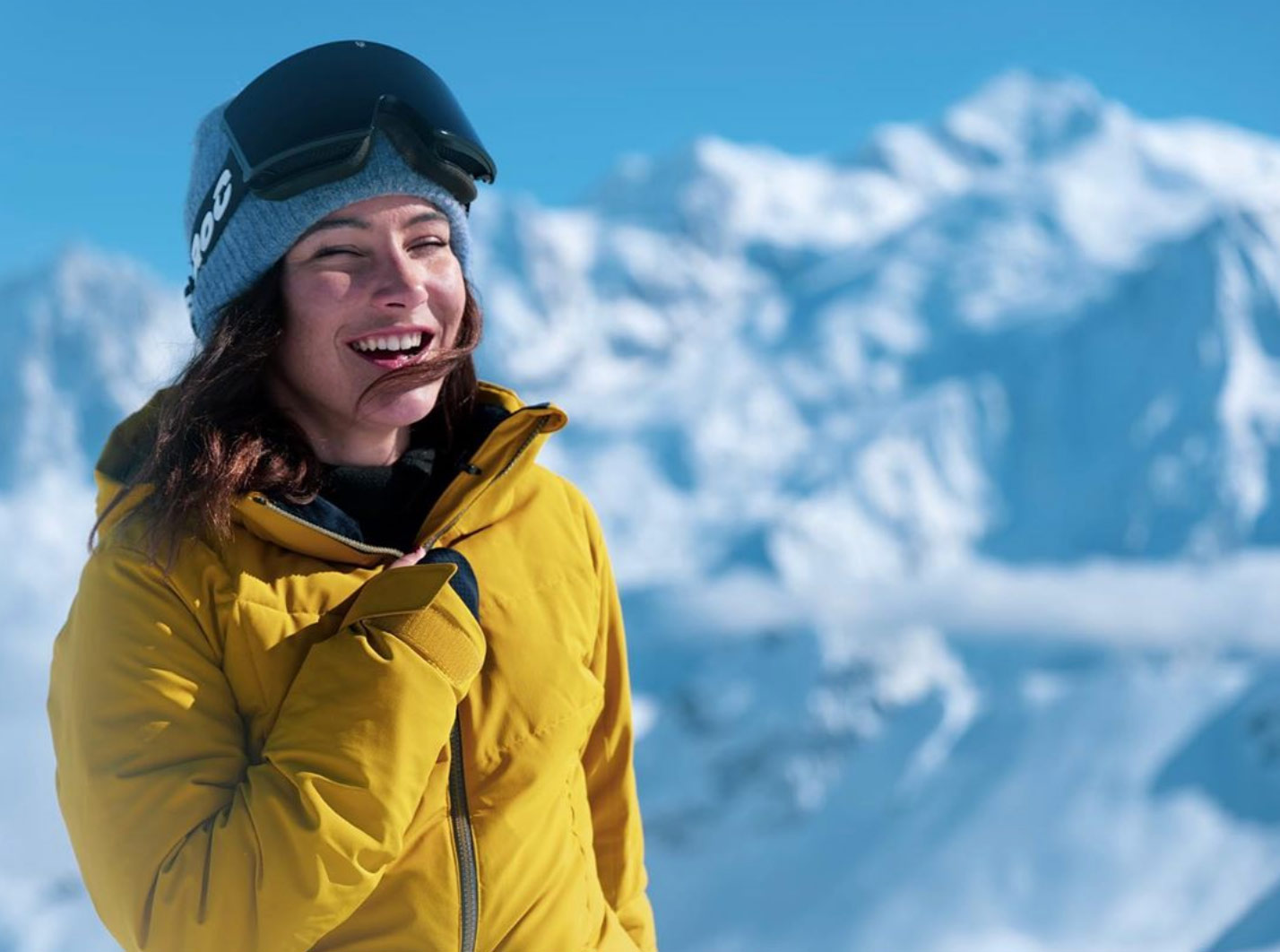
Photo: Vincent Reynaud
Who are you?
I’m a freestyle skier. I come from La Clusaz, but I grew up in Guadeloupe. I won four medals at the X Games, have a vice world champion title, went to the Olympics twice, and I just started skiing in the backcountry.
How did you get into skiing?
When I moved back from Guadeloupe to Annecy, I was seven. At about 12 I began to ride every Wednesday and on the weekends with my friends. Thanks to figure skating, I had good air awareness. One evening I came home and told my father, “I did my first 720, tomorrow I will try my first backflip!” He said, “Wow, I thought my daughter would be skiing three slopes in a day, and now she’s into freestyle!”
My dad asked the coach of the La Clusaz freestyle team if he would take me into the club. At first he said no, because there were no girls in the club. At the end of the season, he finally agreed to a tryout, because I was already riding with a bunch of the kids from the club. The next winter I did my first competition in halfpipe, the World Cup at Les Contamines in 2006. I was too young to participate and was a forerunner, but thanks to an exemption I was be able to compete, and ended up winning. It all started from there.
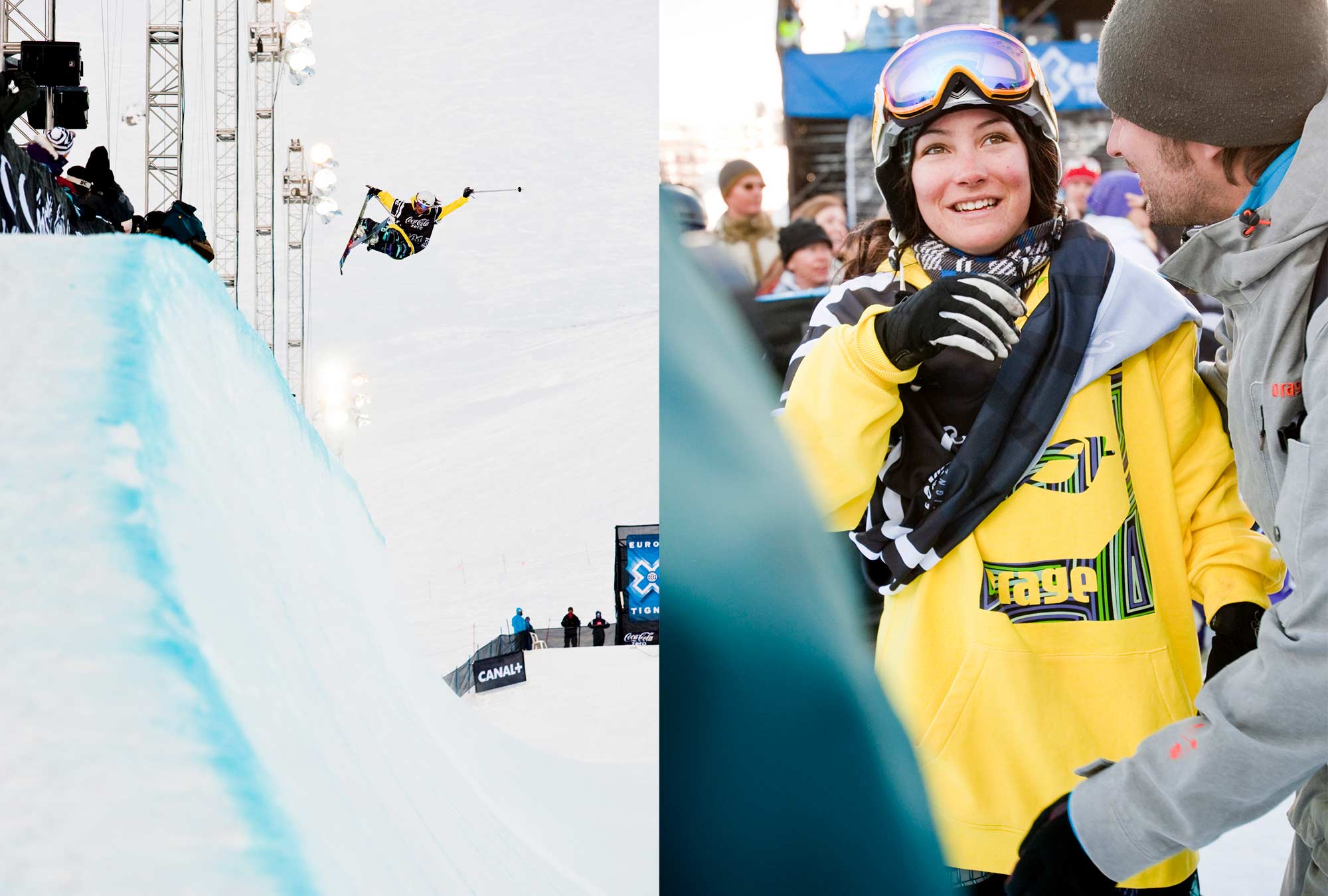
A young Anaïs throws down at the 2011 X Games in Tignes. Photos: Stef Cande/ESPN Images
Why did you end up as a halfpipe skier?
At the beginning I did everything. I tried some mogul skiing… I was very bad (laughs). I podiumed every time because I did 720s, but I was always 10-15 seconds behind the others at the finish line. In big air there weren’t a lot of girls, I was always the only one competing so it wasn’t that interesting for me. And in slopestyle I had worse results than in halfpipe. I finally chose pipe because there were a few girls competing there, and I had better results.
How did your pro career get started?
It was a series of events and things that I didn’t really realize at the time. A little story: the winter after I did my first contests, I was trying to slide a down-flat-down rail in the park, and was failing miserably all day long. The mountain was about to close, and the guy told me to try one last time before he’d kick me out. I said to myself that if I got the rail this time, I would do everything to make this my job. That’s what happened: I cleared the whole rail on that last attempt, and I continued to put all my energy into what I loved.
Tell us about your last contest.
It was at the 2019 World Championships, and I knew I was retiring. I was just thinking about having fun, making people laugh and saying goodbye to the scene my way. So I did a run with a beret on my helmet and a “baguette” in my hands. I just wanted to mark my departure by saying “it's over,” and that's how I want to be remembered. I had already proved what I was capable of, and this time it was just for me.

Anaïs Caradeux - A retirement story (YouTube)
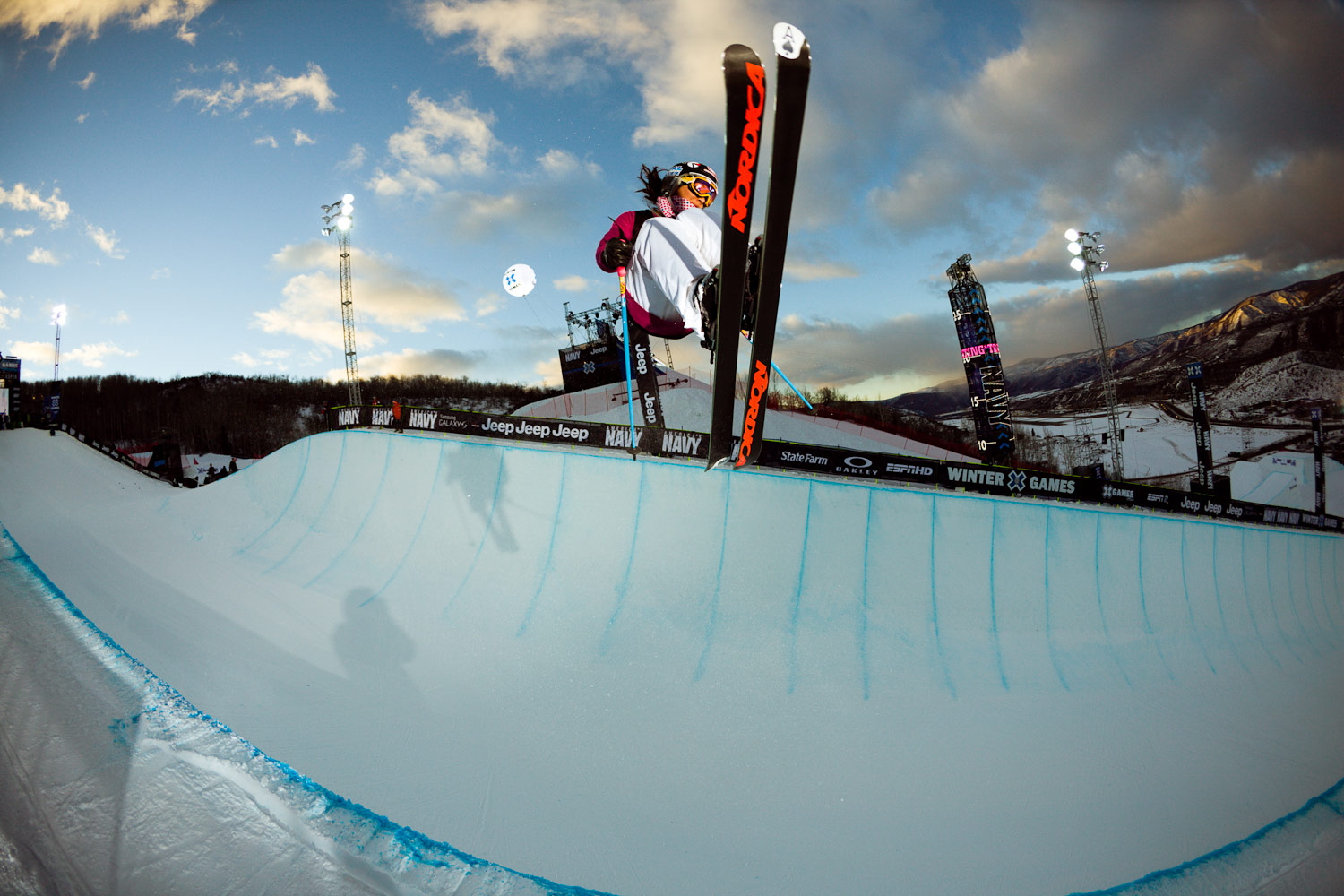
Flying high in Aspen in 2011. Photo: Nate Abbott/ESPN Images
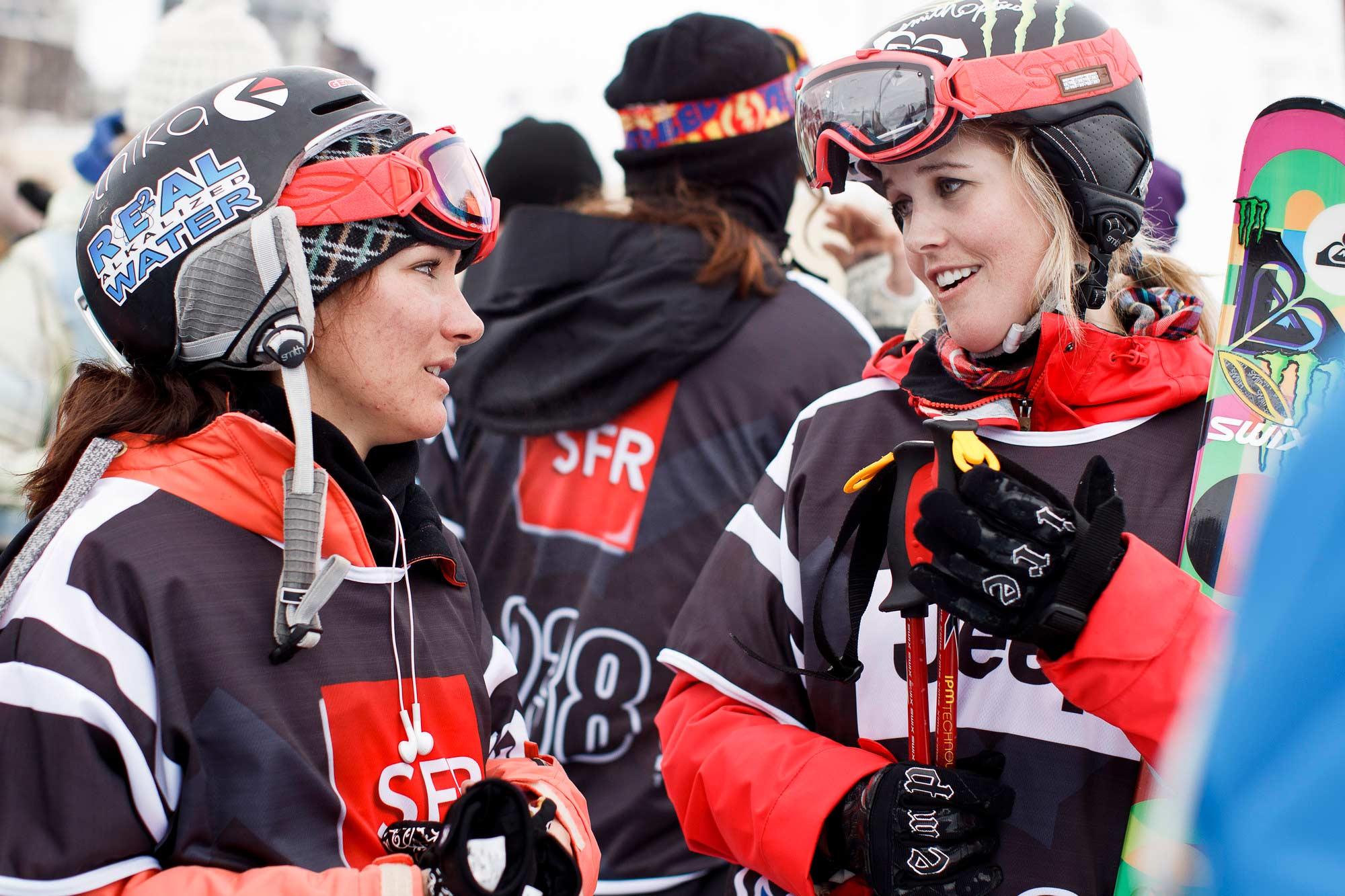
With freeski legend Sarah Burke in 2012. Photo: Stef Cande/ESPN Images
What’s your best memory from the contest life?
The sense of community that we had. With the girls and the boys together we must have been around 30 people, and we all knew each other well and were very close-knit. It felt like you were traveling with your family, not necessarily on vacation, but as part of a traveling Club Med. You push yourself, you help each other, you really have a sense of family. It's something that I miss today, and I wish I realized sooner how lucky I was to have that.
What were the advantages of that lifestyle?
I had a crazy life! I traveled every month to the four corners of the world doing something that I liked, that fascinated me and motivated me to get up every morning. In addition, I had a sense of accomplishment and recognition because I was improving, and it’s super important in someone's life to feel that we have value and that we’re growing. I discovered lots of countries, lots of people from different cultures. It was cool!
And now, after the heydays of the contest lifestyle?
I’ve had to reinvent myself. All my life, my value was according to my skills, and what I managed to land or not on skis. Now I have to find something in which I can recognize myself, something that gives me a sense of accomplishment. It’s the challenge of retiring: finding values and making sense of your life in a different way. It’s hard, because I’ve always been told that we became someone only through success… and here we are now. You have to re-discover, tame and appreciate yourself as a person, not by what you can accomplish.
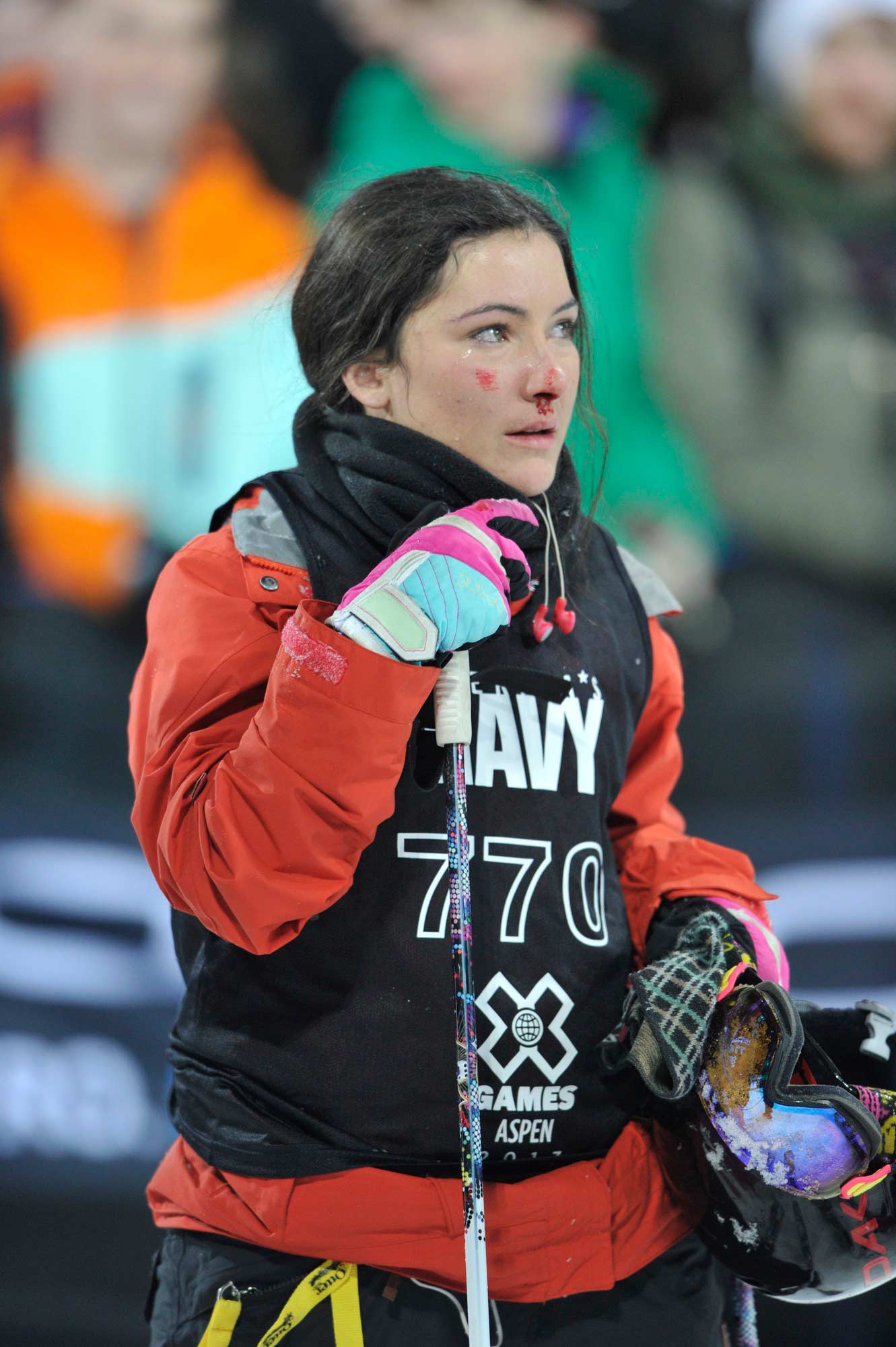
Contest life isn´t all highlights. After a slam in 2013. Photo: Eric Bakke/ESPN Images
Have you met people in the same situation?
Yes, a lot of friends have retired before me. Some tried to go into other sports, but few made it at the same level. You get used to being at the top, and when you start getting lost in the crowd, it's harder to keep that same fire. Others have focused on their families, creating environments where they can thrive. Many others just needed to move on. Each one has tried to remake themselves in a different way.
For my part, thanks to the advice of friends who had already gone through it, I decided not to drop everything immediately. To be honest, it's the first thing I wanted to do—just let everything go. But then I realized I had the chance to stick around a bit longer and develop my thing in skiing. If I leave one foot inside, I can keep doing different projects as long as I can. And later, when I feel like I’ve done everything and given it all without regrets, it will be the time to finally leave.
What projects have you gotten involved with?
A few years ago I was contacted by Webedia, a digital advertiser that manages several YouTubers. At the beginning I wasn’t interested, but then I thought it would be a good way to redefine myself, by sharing my passion for sports and skiing in a different way than what I was doing until now with competitions. We are working together with Xtreme video, a branch of Webedia on Instagram. We developed a six-vlog project on IGTV where I meet athletes who, like me, made the transition between freestyle and freeride. The idea is to learn and evolve with them and with my audience. We talk a lot about adapting and evolving, because freeride and freestyle are similar, yet diametrically opposed sports. There are a lot of concepts and information to take in.
Where have you been skiing?
In the early season I went to an event created by Victor Daviet called Safety Shred Days in the French Alps for a mountain risk awareness training. Over a weekend you learn to familiarize yourself with a beacon, snow conditions and how to analyze terrain to be as safe as possible in the backcountry. When you go freeriding it’s not only your life that is at stake, but also your homies’ lives. And you have to be 200% confident with the people you ride with. Everyone has to have training to both avoid and respond to accidents.
After that I went to ride in the USA in Utah with a friend, Jen Hudak, who I spent my whole career with, and who’s my mentor in a way. Then I flew to Canada to do a trip hut with Anna Segal, before joining Enak Gavaggio for some heliskiing. Another episode was planned after that, but I had to cut my season short due to the closure of all the ski resorts and the confinement measures due to Covid-19.
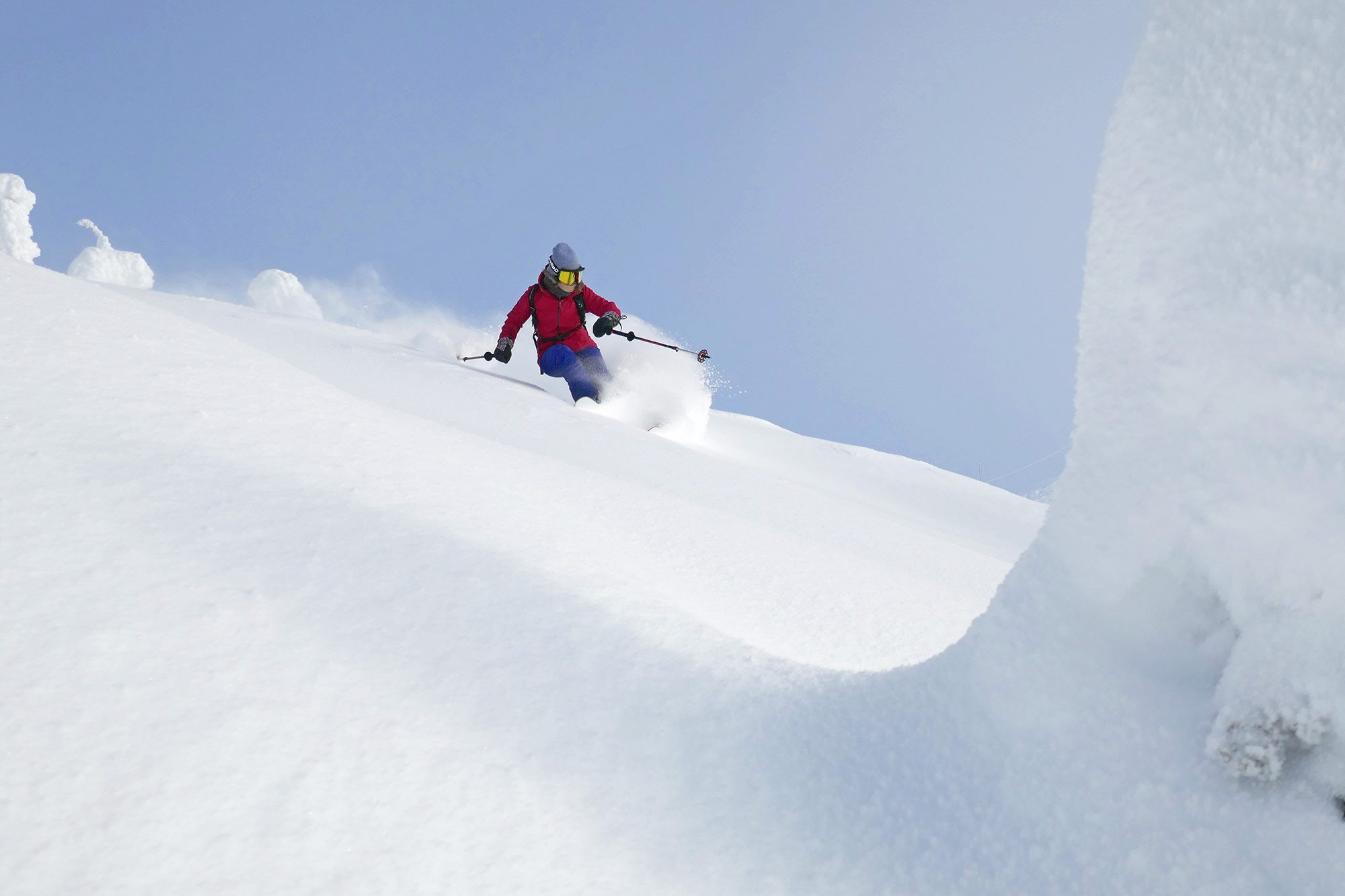
Anaïs gets comfortable in her new surroundings.
What’s next for you?
I really liked what I did last season. I learned a lot about what to film, and how. I made a lot of mistakes, and I’d like to have the chance to keep progressing and create better content in the future. The problem is, I used all the money that I had put aside for this first year. I had no sponsors for this project, so in the future I’d need to find sponsors. Right now I am trying to create a presentation and get a few sponsors, but in the current situation, I don’t know if they will be able to have a vision for a long-term budget. For the moment everything is on standby. But I would really like to keep going: there’s a lot where I can progress both in my skiing and production-wise. My long-term objective is to join the Freeride World Tour. The current project is to keep learning, and within a year or two, start getting back into contests.
What do you do outside of skiing?
This summer I did a road trip with some friends, and slept in my car in Portugal, Spain and France for two months. I surfed two or three times a day. It was great not to have a plan or obligations. I did what I wanted, when I wanted. It was really cool. It was the first time in 15 years that I had this moment just for myself, without having any pressure, able to enjoy the days as they were. I put all the energy that I didn’t put into summer training into surfing. I fell in love with the ocean.
What makes you happy?
When it's sunny! More seriously, when I have projects that work well and that have good feedback. It tells me that I’m on the right track. I’m also happy when I catch a good wave… and when I see my friends with whom I can re-develop connections that I couldn’t take care of during my life as a professional. Spending time with my friends and enjoying life in a more relaxed way.
What inspires you?
When people tell me that what I share inspired them to follow their own dreams. When they ask me for advice, my support or just share with me what they are passionate about: their drawings, their videos and so on. It inspires me to see that everyone follows their passion in a completely different way, and to see so many possibilities.
How do you see skiing today?
I see skiing a little differently, since I am no longer looking for pure, hard performance. I’m more in the search for sensations and sharing them. I want to be able to keep following my passion of sport and using all that I learned during my years of competition, but I also want to be able to discover something new. It’s a new world that I’m entering [in backcountry], and I think there is a lot to learn. And really, that's what makes me happy.
Do you have some dreams for the future?
Dream #1: Go riding in Alaska. It's a bit of a holy grail! Any good rider wants to ride those legendary slopes and snow. That’s a place were you're really facing yourself, you're all alone in front of a sick lin with crazy possibilities… the danger, the adrenaline! That’s what really attracts me.
Dream number #2: Succeed in entering a barrel one day surfing. But I'm going to have to surf a lot more often and put myself in more dangerous situations. This is the goal of my life. It must be crazy to be deep in a barrel! It’s a place where you’re right in between pleasure and danger, a place where time stops a little.
Dream number #3: Learn to skate better, to get around a whole pump track, and ride bowls.
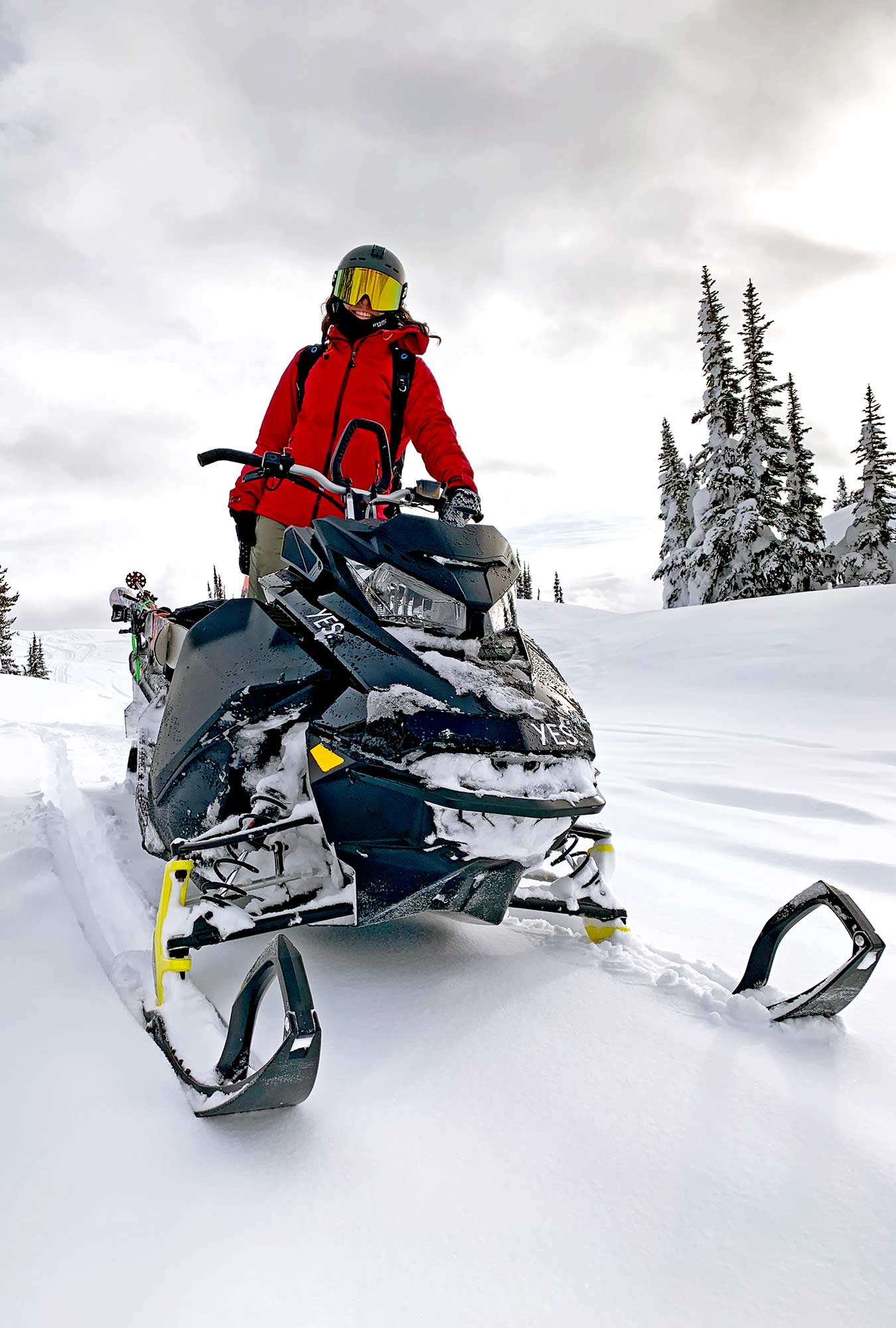
Anaïs wrangling a sled in the BC, 2020.
